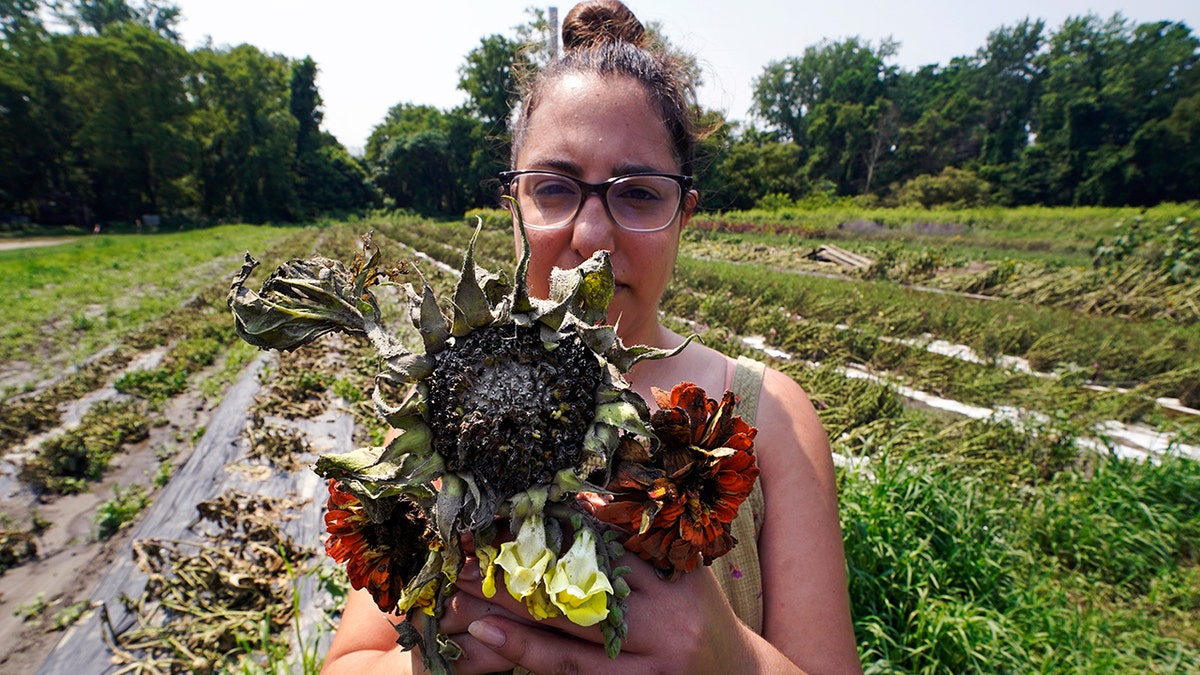Farmers across the Northeast are reeling from the impact of recent catastrophic floods, which have wiped out entire harvests at the peak of the growing season. Micah Barritt, co-owner of Diggers’ Mirth Collective Farm in Burlington, Vermont, saw his meticulously cultivated crops, including watermelon, eggplant, and tomatoes, destroyed in a matter of hours. The estimated loss for his farm alone is $250,000.
The devastation extends far beyond Vermont, impacting farmers in several Northeast states. The floods arrived at the worst possible time, leaving many crops too young for harvest and now too late to replant given the region's short growing season. The torrential rainfall, exceeding even the levels seen during Tropical Storm Irene in 2011, has been deemed Vermont's worst natural disaster since the floods of 1927.
Experts link these extreme weather events to climate change, with warmer atmospheric temperatures leading to more frequent and intense rainfall. The projected increase in global temperatures threatens to exacerbate the problem in the future.
Diggers’ Mirth is one of seven organic farms at the Intervale Center in Burlington, all of which were inundated by floodwaters. Despite preemptive harvesting efforts by hundreds of volunteers, the losses are expected to surpass those from Irene, which totaled around $750,000.

The impact wasn't limited to produce farms. Maple Wind Farm in Richmond, Vermont, a pasture-raised animal farm, lost a significant portion of its poultry. Despite predictions of heavy rain, the unprecedented flooding of the Winooski River led to the loss of nearly 400 turkeys and 700 chickens.
Vermont's Secretary of Agriculture, Anson Tebbetts, highlighted the widespread consequences of the flooding. Dairy farmers were forced to discard milk due to impassable roads, and the loss of corn crops, essential for dairy feed, poses a significant challenge. Blueberry farms and pick-your-own operations also suffered extensive damage. As of late last week, reported crop damage in Vermont reached 7,000 acres, with the added burden of debris removal for many farms.
In Massachusetts, at least 75 farms reported damage, with estimated crop losses exceeding $15 million across 2,000 acres. The total impact is expected to rise as assessments continue. Governor Maura Healey has launched the Massachusetts Farm Resiliency Fund to support affected farmers.
Connecticut also experienced widespread agricultural damage, with approximately 2,000 acres of farmland affected, primarily in the Connecticut River valley. Governor Ned Lamont described the situation as an environmental crisis, highlighting the stark contrast between recent drought conditions and the current flooding.
Kate Ahearn of Fair Weather Growers in Rocky Hill, Connecticut, anticipates substantial losses, impacting not only crops but also labor and wholesale accounts. In Pennsylvania, while flooding wasn't as severe, concerns remain about potential crop damage due to saturated soil and lack of oxygen for plant roots.
Comments(0)
Top Comments